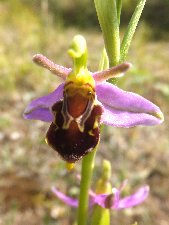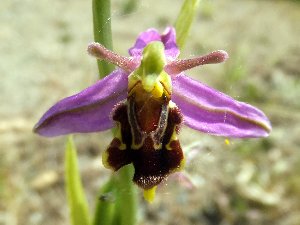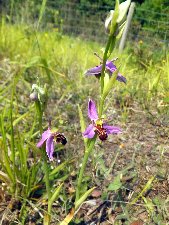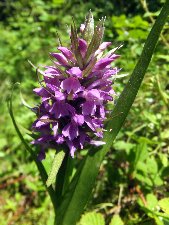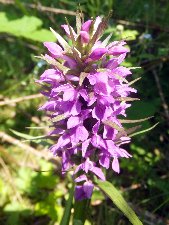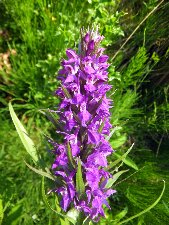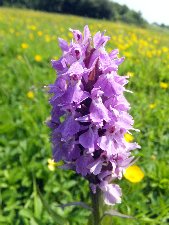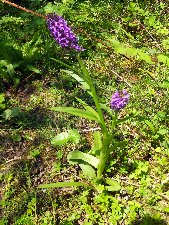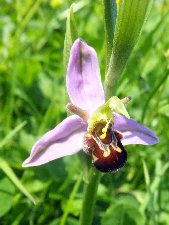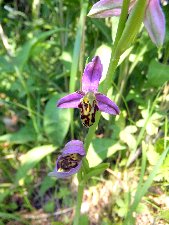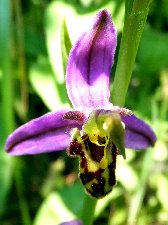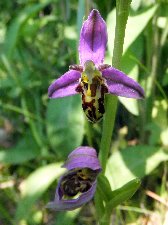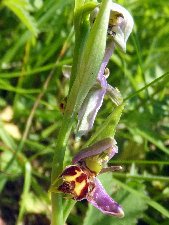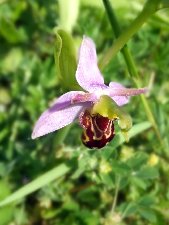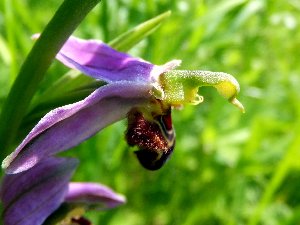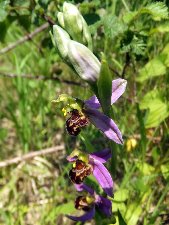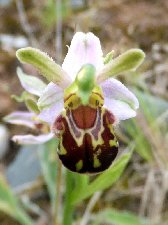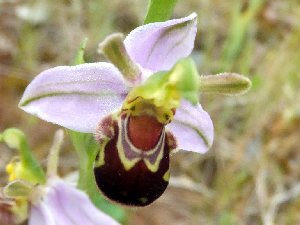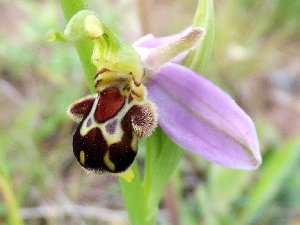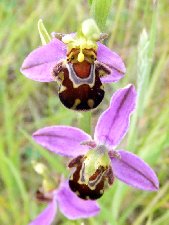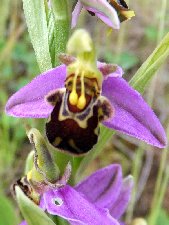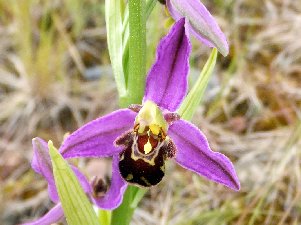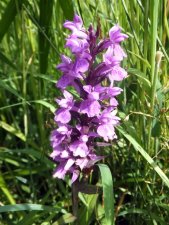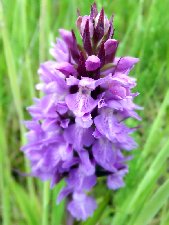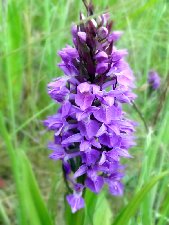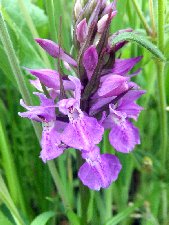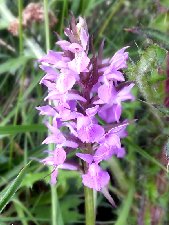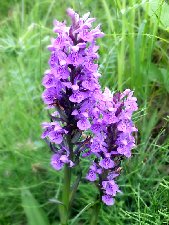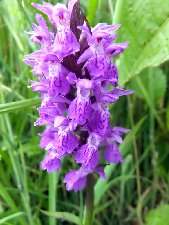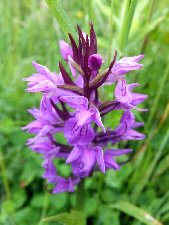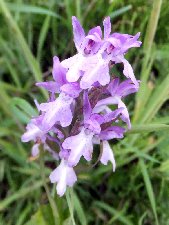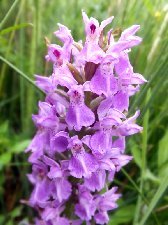|
|
|||||||||||||
|
|
|||||||||||||
 |
|
5th June 2016 Marford Quarry (SJ 3581556225) It was many years ago that I read in the local paper that Bee Orchids grow here, but despite numerous visits over the years, I have not seen them. A case of "You might even see." perhaps? The rare plant species list for Denbighshire has a very specific 10m square grid reference for Bee Orchids here, but a careful examination has only shown a rather good colony of Common Spotteds. However, armed with a tip off and detailed location description, we head up to one of the three enclosures on the site. Apparently these are not used for orchid protection, just for monitoring plant and insect life. Yes there two Bee Orchids there although last year it was six. What is remarkable about these two orchids is that the little yellow tip of the lip does not want to curl backwards. This is a part of a land fill site returned to nature around 2008; will it eventually echo Alyn Waters for orchid diversity and density in time? There are some 20 odd Southern Marsh Orchids growing here and to be honest, as you approach them they are rather large and obvious. They are growing in what may be a bit of a marshy area when rain has been heavy, and in a clearing in the trees. Nice large specimens in general, though to me there seem to be two populations. There are those with darker purple petals and sepals and prominent bracts, and paler, more lilac and more typical looking plants. One observer commented on the possibility of a touch of hybridisation with Early Marsh Orchids. From where did this group come to colonise here? The RSPB site at Burton Mere is due west of here, and that's where the prevailing wind comes from, but apparently there is a lot of waste ground with numerous orchids in parts of the Stanlow oil refinery site just to the north. On leaving the site we find a single Bee Orchid just coming into flower.
6th June 2016 near Ellesmere Port Last visit here I commented that it looks a bit overgrown, but two years on it looks no worse, and lo and behold, not only is the colony of Bee Orchids at the southern end of the copse sporting 29 flowers this year (and perhaps more to come), but two of them are var belgarum! A check of my old photos shows that I hadn't seen these before. Despite Harrap asserting that belgarum should have symmetrical markings I am reliably informed that this does not need to be the case. These do lack the pointed hairy shoulders and lack a speculum on the lip. There are no other named varieties that fit these plants. Belgarum could be more of a diverse classification for a variety than say the albino forms, and covers all those where the lip markings are grossly atypical.
11th June 2016 RSPB Burton Mere (SJ 3144273418) A great site for Bee Orchids. Hundreds to be seen with some large established examples, but unfortunately no abnormal forms seen. What took my notice this year was the range of colour on the lateral sepals from near white to deep pink. Fifty shades of pink in fact. The Marsh Orchids here are also interesting, mainly Southern Marsh Orchids, with possibly some interesting hybrids. Below is my interpretation of some of these with an explanation of my reasoning based on the flower structure and appearance. Feel free to disagree on these; this is just my interpretation of what is a confusing genus to many with both much hybridisation and individual variation within species. Personally I am not a big fan of hybrids as there are no ways of getting an easy answer apart from subjective observation, but they exist so deserve inclusion and mention.
|
|
|
||||||||||||||
